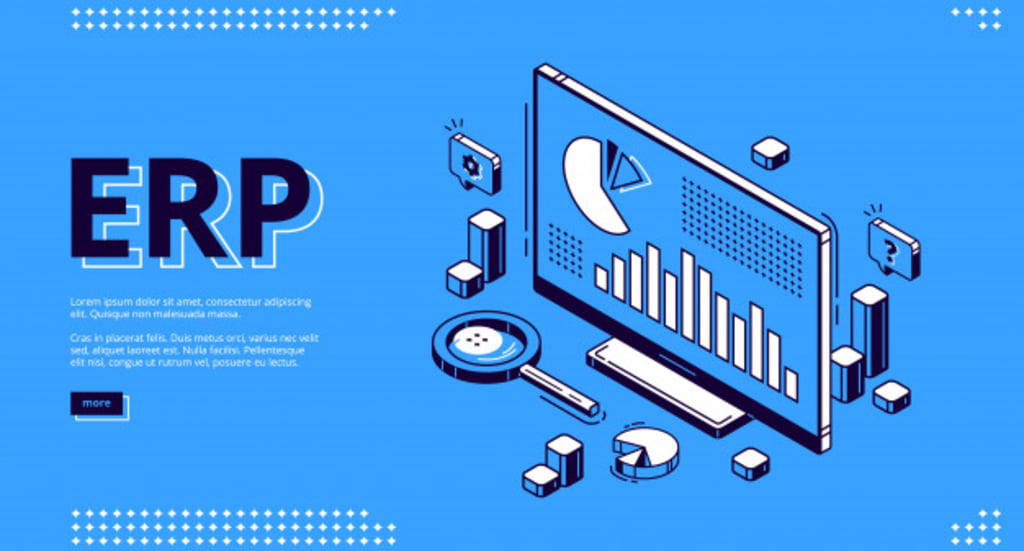Data Migration in ERP
Ways to include ERP in Data Migration

Big data drives the latest businesses, and it never sleeps. Simply put, you've got to make sure data integration and data migration are well-established, seamless processes. you would like to possess a streamlined process albeit the info is migrating from inputs to a knowledge lake, from a knowledge warehouse to a knowledge mart, from one repository to a different, or in or through the cloud.
What is data migration?
Data migration involves moving data either from one place to a different, one application to a different, or from one format to a different. Companies practice this method to introduce a replacement location or system for data.
8 Key steps in ERP data migration strategy
While defining the ERP data migration strategy, the organizations got to define the sort of migration they need to use explosion (full migration) or trickle (migration process in phases). to settle on any of those, businesses need to prolong the technical architecture for detailing the migration processes.
By keeping in mind the planning, target system, and data to be pulled over, you want to start defining timelines for the concerned project. Once you're through with this, the entire project is going to be documented.
While planning, don’t forget to think about security plans for your data. you'll seamlessly thread protection plans throughout the method for any data that needs special security.
1. Allocate Data Cleaning Responsibilities
Companies often believe that each one the info cleaning is often easily handled by the IT team. this is often a standard misunderstanding, and while there's cleaning software available, these programs can only help with defining regions that need cleaning.
For example, out of two address documents for business, people still got to understand the right one. A knowledgeable person is additionally required to see if a closing equilibrium is true or not.
In certain situations, the person responsible for cleaning up the info might not be a part of the IT department, they could be a part of the sales division. However, they'll belong to the department that owns the info. These individuals are information managers, and their role is crucial to determine some quality information, norms, and guidelines. IT employees can help data holders to define the knowledge flow, where to update the knowledge, and what information sources to seem for.
A few samples of data cleaning are mentioned here:
Cleaning duplicate accounts of clients or suppliers
Clearing old stocks
Master information not categorized as prevalent taxonomy
Fields of the blank description of things
Removing data for a client who has terminated the contract with the corporate
Important data stored in your Excel, which isn't included within the recording scheme
2. Remove Duplicate Data
There are two ways to spot duplicate items:
1.The direct duplicates include either two or more items with an equivalent manufacturer name, description, and part number.
2.The fit-form-function data duplicates typically include two or more items with different manufacturer names and part numbers. However, they'll have an equivalent form, function, and fit.
Ensure you are becoming obviate both these types for a far better migration experience.
3. Determine Requirements Resources
To clear data, you'll require developers to assist you to change the info. you'll also need data owners for reviewing and cleansing your data. Additionally, having a couple of executives handy to review certain sorts of data is additionally recommended. you're presumably to wish data elements associated with the core of your organization’s culture. These elements may include items that your organization has avoided because, at that time, they seemed difficult to deal with.
Other resources you're likely to wish include executives for change management and business process management. you'll need to train employees on managing, analyzing, and inputting data after the new system is implemented.
4. Consider Industry Regulations
Different industries have different regulatory requirements.
For instance, a couple of regulations restrict the power to vary and/or export certain sorts of data records. An example of this is often HIPAA, which restricts exporting data of electronic medical records from one location to a different.
Before completing ERP data migration, carefully consider your method of knowledge cleansing. Check whether you would like in-system data or Excel data cleaning supported your company’s industry-specific regulatory requirements.
5. Define Attributes and Taxonomies
The majority of the ERP software uses taxonomy to distinguish items easily. you've got to properly and completely classify master records in great detail. By doing this, you'll make the record easy to spot for search and report-related functions.
It is unnecessary to settle on a specific taxonomy, but you want to have a taxonomy for supporting your company’s business initiatives. you've got to make sure your ERP consultant features a good amount of experience with taxonomy selection and deployment processes.
Item record attributes are equally essential because they assist you to define items. Besides, they're significant for effective parametric searches. If you've got incomplete or incorrect attributes, it can prevent items from being found. And this will end in excess inventories or maybe proliferation of parts.
To carry out a successful ERP data migration project, you want to extract, normalize, and complete item attributes beforehand. Since the quantity of attributes for extraction and enrichment is large, an automatic approach looks like the sole practical thanks to doing that.
6. Develop New Processes
After you're through with the initial data cleansing, there'll still be many data to cleanse. you'll avoid this if you ensure your employees adopt new processes for enabling better data accuracy.
These processes are indeed designed for legacy systems that will soon be retired, but they're still worth some time and energy.
Given that most ERP projects last for years, will you be ready to endure two (or more) years of messy data?
To avoid this scenario, companies can redesign their business processes and train employees for the longer term and therefore the interim state alike. Organizational change management and business process re-engineering together play a special role in maintaining neat data.
7. Don’t Migrate all of your Data
Industries believe the notion that migrating all the knowledge from the legacy system to fresh ERP software may be a good idea. They feel the software will somehow magically wipe and optimize it.
This is not true.
Take this, for instance; you won’t place garbage and clutter within the van if you were moving to a replacement house. a bit like this, you don’t need to carry an equally of data once you are moving to a replacement ERP system. you would like to eliminate information that's unclean, useless, or simply garbage for you. Having useless information will make it difficult for you to seek out the knowledge you're trying to find.
Companies often tend to hoard data, thinking it'd be useful to someone someday. An ERP system may be a good way to wash such useless data and make space for important information.
8. Testing Before Migration
It is important to seek out out if you’re shifting information to check environments in which your data is on the proper path. to see whether you're on the proper track, move your data to check environments. Although time-consuming, you'll need to develop a special unique code for this process. Don’t leave the code development until the eleventh hour because you don’t want to form a mistake when exiting it.
Final Thought
Data migration isn't important during the initiation phase of a project.
If your company avoids or delays the info migration process, your new system won’t provide reliable data. this may cause several technical challenges, low system usage, short benefits realization, and customer dissatisfaction.
It's true, ERP data migration and cleansing are often significantly costly to an already costly ERP project, but it'll pay off soon. After successfully migrating your data, you'll easily get through the identification of excess inventory and reduced equipment downtime, and luxuriate in improved data insights.
The above points can help your organization develop a strong ERP data migration strategy. they're going to assist you to make sure the ERP software offers reliable data to all or any participants from the minute it goes live until it’s discharged.
About the Creator
Jui Bhatia
Digital Marketing Executive at Techimply. I believe in providing the best service.






Comments
There are no comments for this story
Be the first to respond and start the conversation.